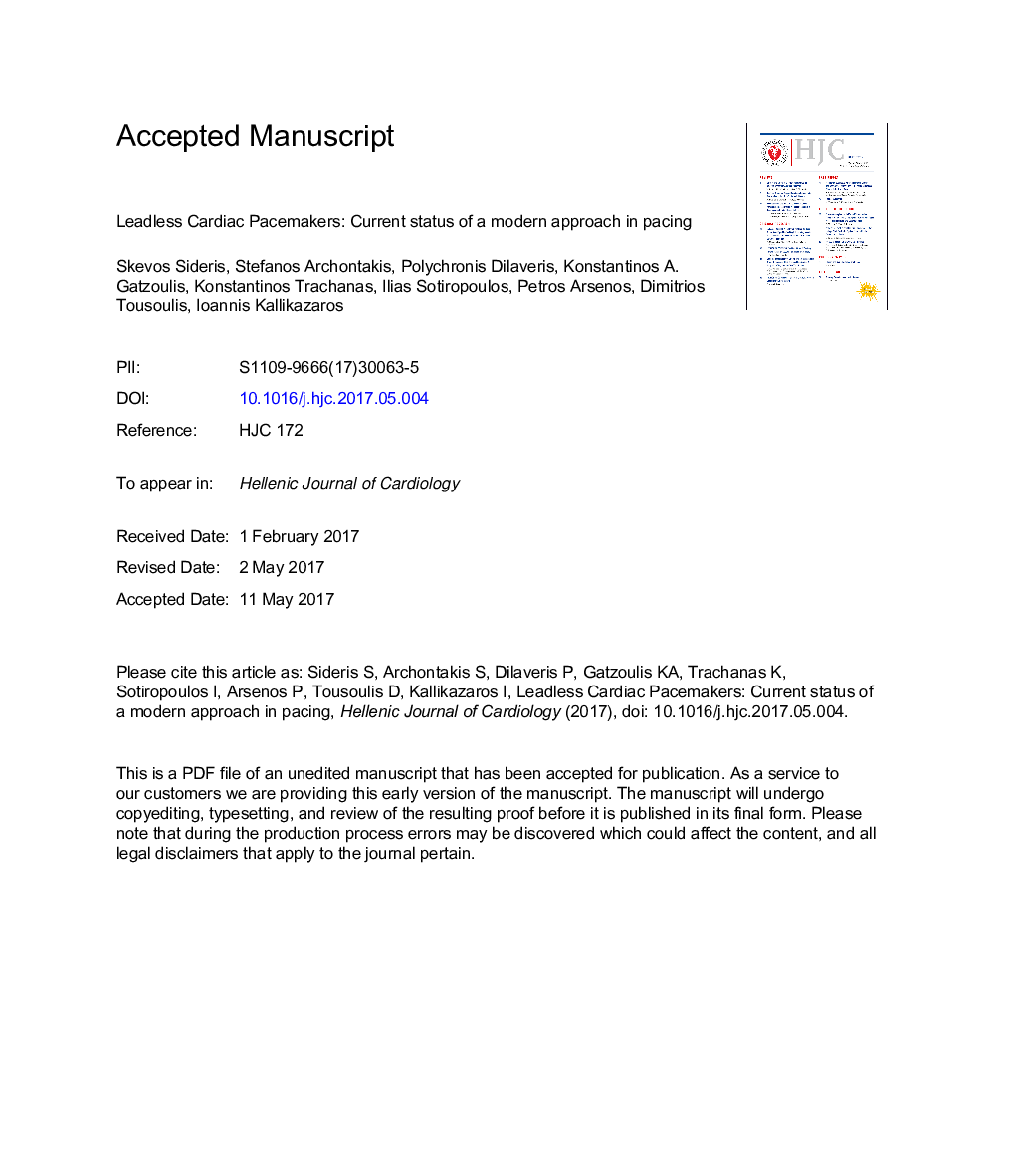| Article ID | Journal | Published Year | Pages | File Type |
|---|---|---|---|---|
| 8660832 | Hellenic Journal of Cardiology | 2017 | 18 Pages |
Abstract
Since the first transvenous pacemaker implantation, which took place 50Â years ago, important progress has been achieved in pacing technology. Consequently, at present, more than 700,000 pacemakers are implanted annually worldwide. However, conventional pacemakers' implantation has a non-negligible risk of periprocedural and long-term complications associated with the transvenous leads and pacemaker pocket. Recently, leadless pacing systems have emerged as a therapeutic alternative to conventional pacing systems that provide therapy for patients with bradyarrhythmias, while eliminating potential transvenous lead- and pacemaker pocket-related complications. Initial studies have demonstrated favorable efficacy and safety of currently developed leadless pacing systems, compared to transvenous pacemakers. In the present paper, we review the current evidence and highlight the advantages and disadvantages of this novel technology. New technological advances may allow the next generation of leadless pacemakers to further expand, thereby offering a wireless cardiac pacing in future.
Related Topics
Health Sciences
Medicine and Dentistry
Cardiology and Cardiovascular Medicine
Authors
Skevos Sideris, Stefanos Archontakis, Polychronis Dilaveris, Konstantinos A. Gatzoulis, Konstantinos Trachanas, Ilias Sotiropoulos, Petros Arsenos, Dimitrios Tousoulis, Ioannis Kallikazaros,
